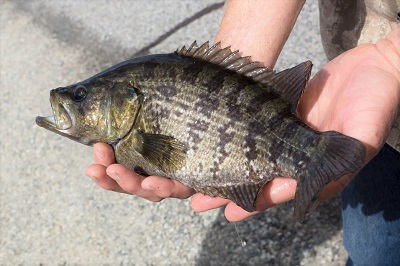Are Native Sacramento Perch The Future Of California Recreational Fishing?
Good piece from the Associated Press about how changing water temperatures could affect the species California anglers will fish for in the future. If trout and salmon – the latter already having hit dire stretches of low stocks and closures of fisheries – are less prevalent, California native sunfish might be the dominant freshwater fish. Here’s more from the AP:

State officials recently introduced Sacramento perch to Southern California in an attempt to widen its range, strengthen its gene pool, create a breeding stock and generate interest among more anglers. Biologists with the California Department of Fish and Wildlife released the first batch of 37 mostly juvenile Sacramento perch on Thursday evening in San Diego County’s only natural lake, Lindo Lake in Lakeside, a suburb east of the city of San Diego.
“It’s a native game fish that we can promote as a viable fishery in the future where we may not be able to have trout in certain areas because of climate change and warming waters,” environmental scientist Matt Lucero with the department said after releasing the fish in batches.
The multiyear experiment reflects the changes facing sportfishing as rivers, streams, lakes and ponds warm. Climate change is the biggest threat to the survival of trout in America’s interior West, according to the Natural Resources Defense Council. It estimates up to 50% of trout habitat in the Rocky Mountain region is at risk of disappearing by the end of the century.
Here’s what the California Department of Fish and Wildlife says about Sacramento perch fishing prospects:
Though native to California waters, Sacramento perch have been displaced from most of their native range due to habitat degradation and the introduction of more competitive sunfish species, such as bluegill. Historically, they could be found throughout the Central Valley; however, they currently exist mainly in locations where they were stocked, consisting of farm ponds, reservoirs, and recreational lakes.



